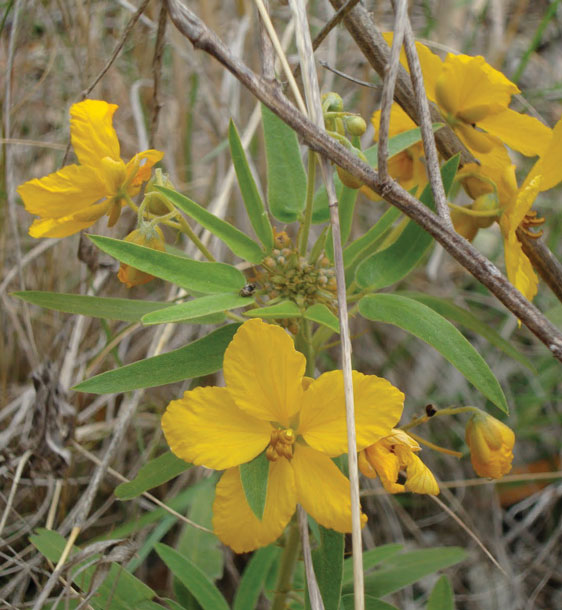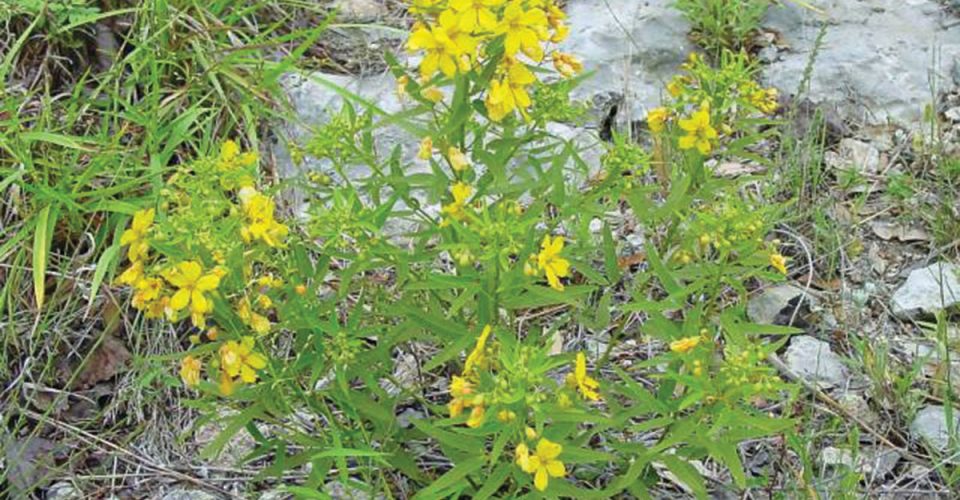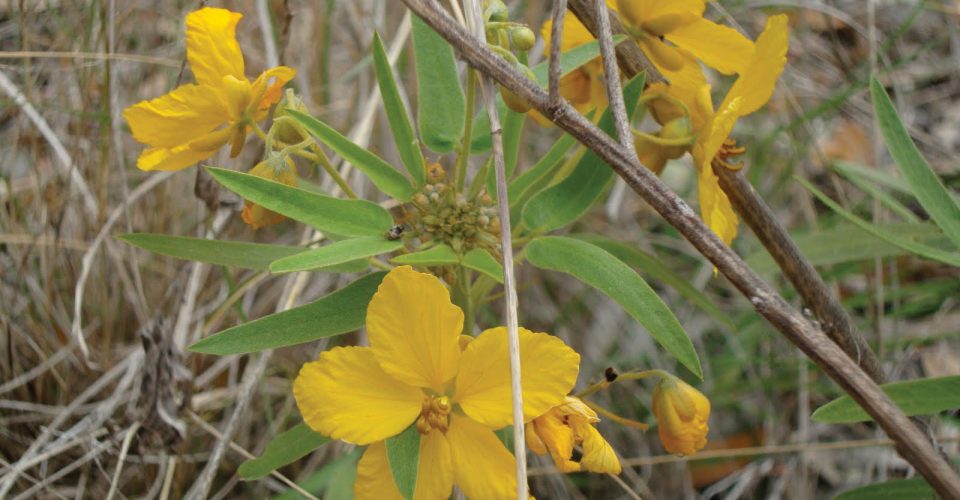Senna (Senna roemeriana)
Twinleaf senna (Senna roemeriana) is an erect, gray perennial forb found on limestone soils throughout Central and West Texas and parts of New Mexico.
- Can have multiple stems rising from a very thick root
- Has spirally-arranged leaves that are in pairs
- Has bright yellow flowers with 5 petals that are produced from April to August
- Can reach a height of 12 to 24 inches
- The plant is in the legume family and produces a bean-type seed pod following flowering
Twinleaf senna can be toxic to grazing livestock and affects muscle tissue. It also causes gastrointestinal problems. Goats that consume this plant die of sudden heart failure. In cattle, the skeletal muscles are affected, causing weakness, diarrhea and death. Sheep and horses usually die from liver failure.
There does not seem to be any recovery once animals show symptoms.
Twinleaf senna issues can be avoided by maintaining good range condition and properly stocking pastures. It can be controlled by a timely application of herbicide if it becomes an issue, but implementing good grazing practices must follow to ensure success. ❚
Editor’s note: Kent Ferguson, retired rangeland management specialist from USDA Natural Resources Conservation Service (NRCS), is providing us with plant identification photo stories to help ranchers identify those forbs, forages and species growing in the pastures. Additional photos provided by USDA NRCS.
Senna is excerpted from the July 2017 issue of The Cattleman magazine.



